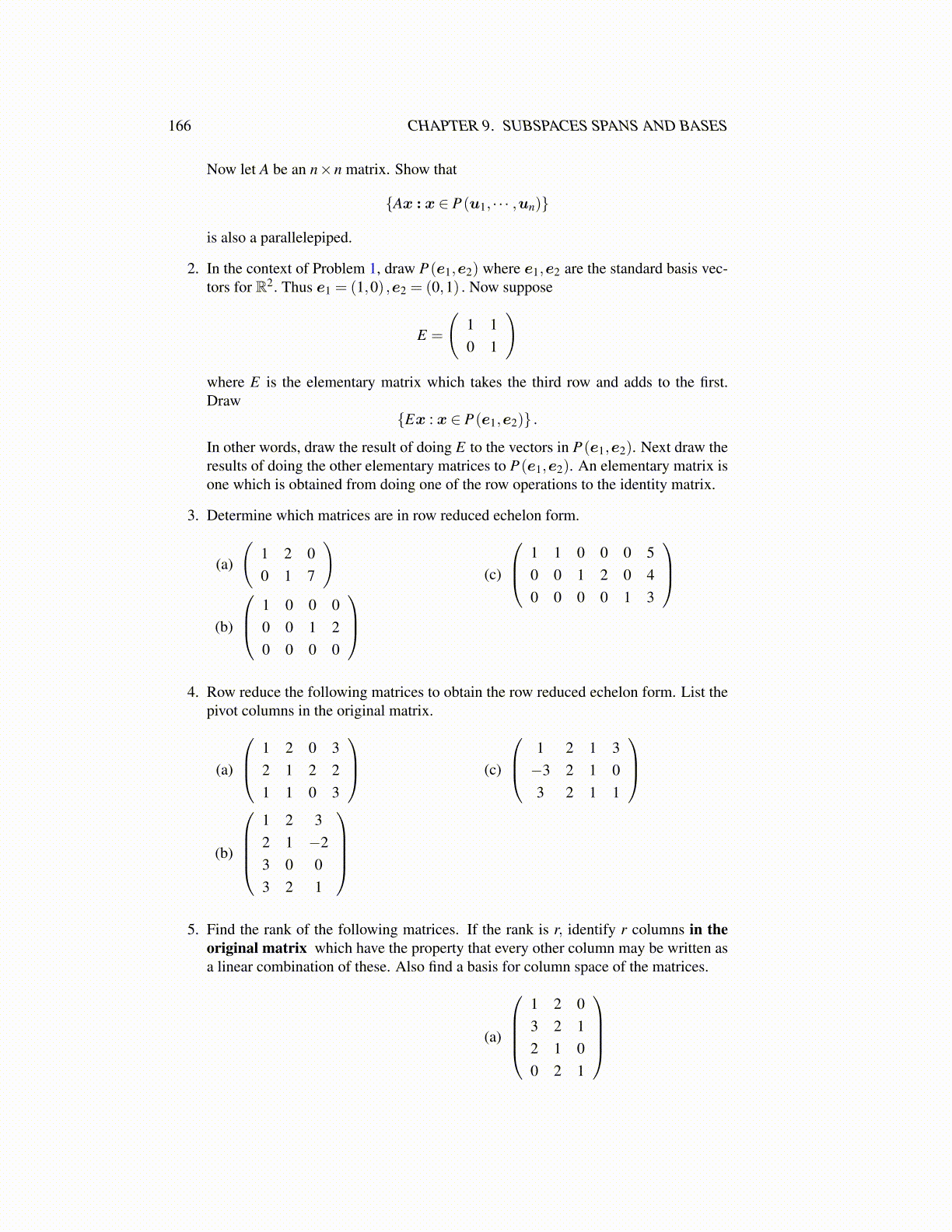
166 CHAPTER 9. SUBSPACES SPANS AND BASES
Now let A be an n×n matrix. Show that
{Ax : x ∈ P(u1, · · · ,un)}
is also a parallelepiped.
2. In the context of Problem 1, draw P(e1,e2) where e1,e2 are the standard basis vec-tors for R2. Thus e1 = (1,0) ,e2 = (0,1) . Now suppose
E =
(1 10 1
)
where E is the elementary matrix which takes the third row and adds to the first.Draw
{Ex : x ∈ P(e1,e2)} .
In other words, draw the result of doing E to the vectors in P(e1,e2). Next draw theresults of doing the other elementary matrices to P(e1,e2). An elementary matrix isone which is obtained from doing one of the row operations to the identity matrix.
3. Determine which matrices are in row reduced echelon form.
(a)
(1 2 00 1 7
)
(b)
1 0 0 00 0 1 20 0 0 0
(c)
1 1 0 0 0 50 0 1 2 0 40 0 0 0 1 3
4. Row reduce the following matrices to obtain the row reduced echelon form. List thepivot columns in the original matrix.
(a)
1 2 0 32 1 2 21 1 0 3
(b)
1 2 32 1 −23 0 03 2 1
(c)
1 2 1 3−3 2 1 03 2 1 1
5. Find the rank of the following matrices. If the rank is r, identify r columns in theoriginal matrix which have the property that every other column may be written asa linear combination of these. Also find a basis for column space of the matrices.
(a)
1 2 03 2 12 1 00 2 1